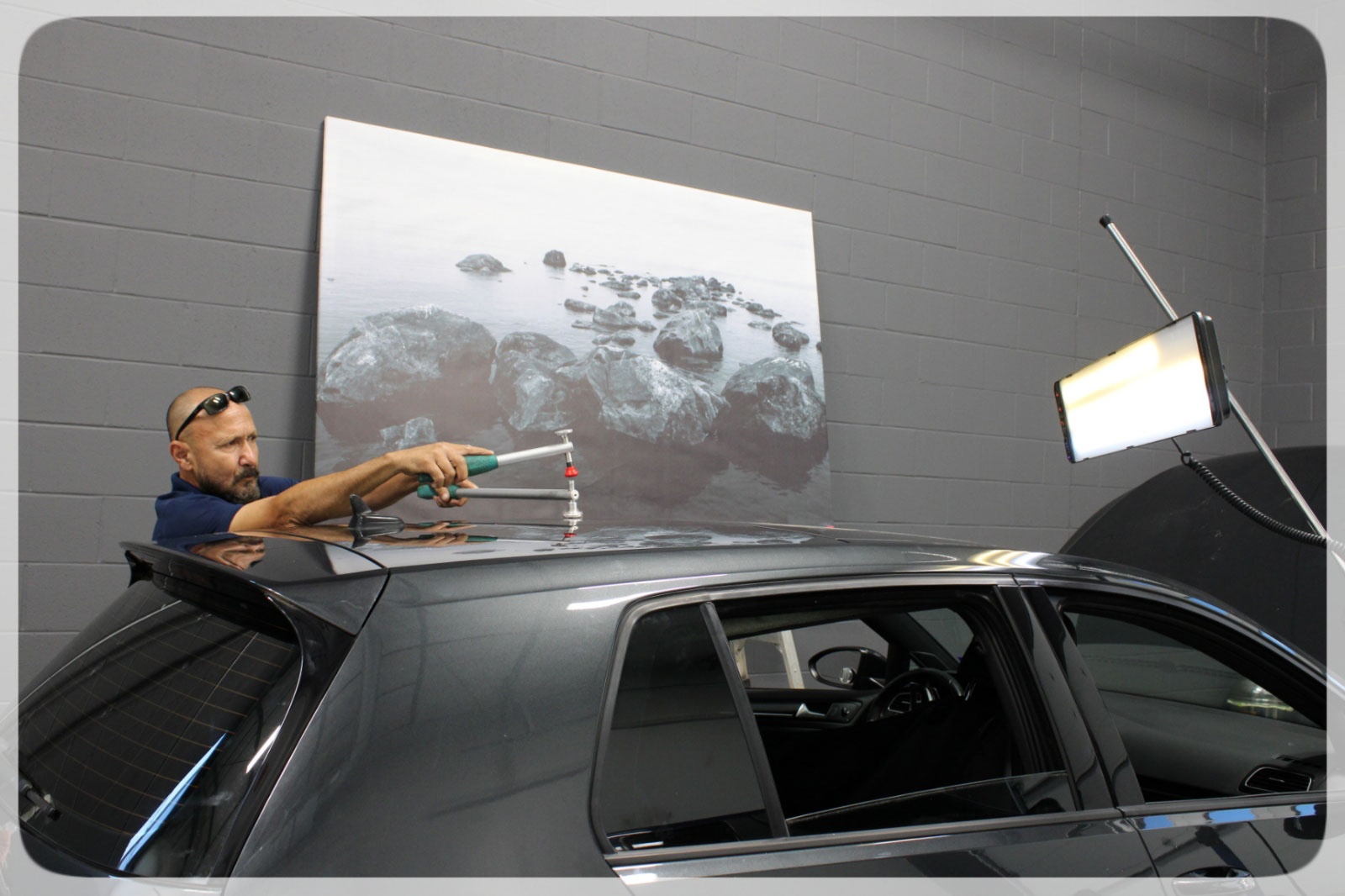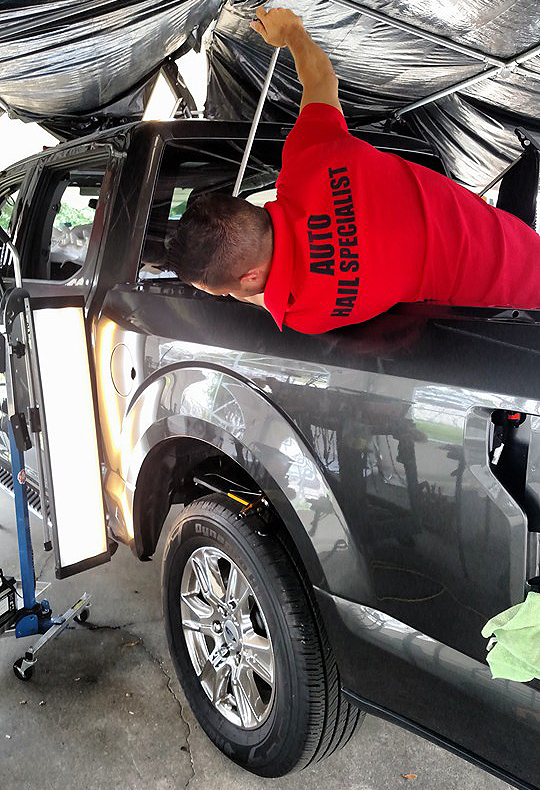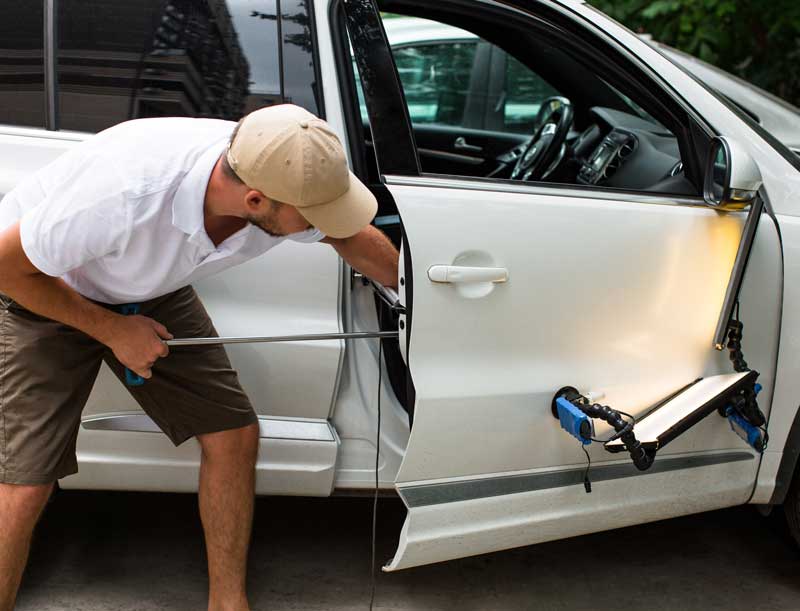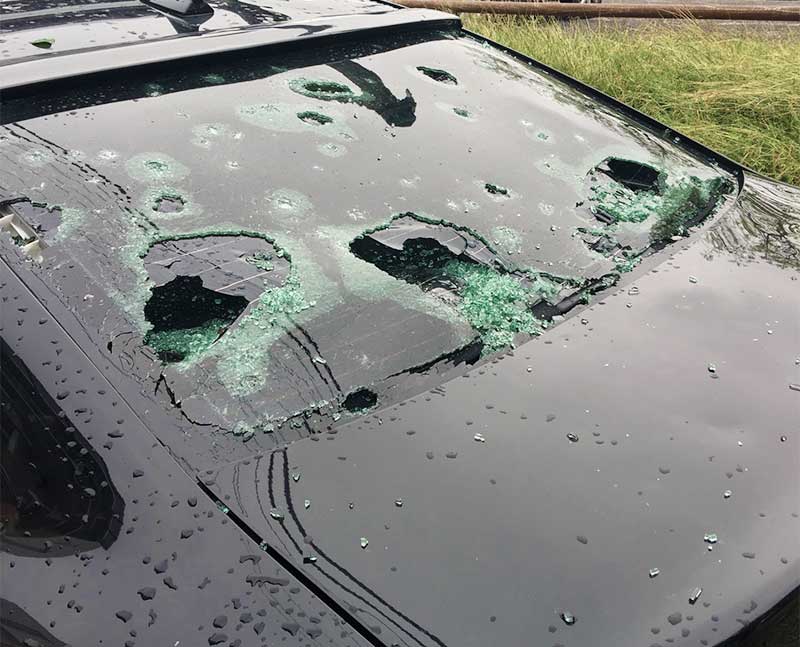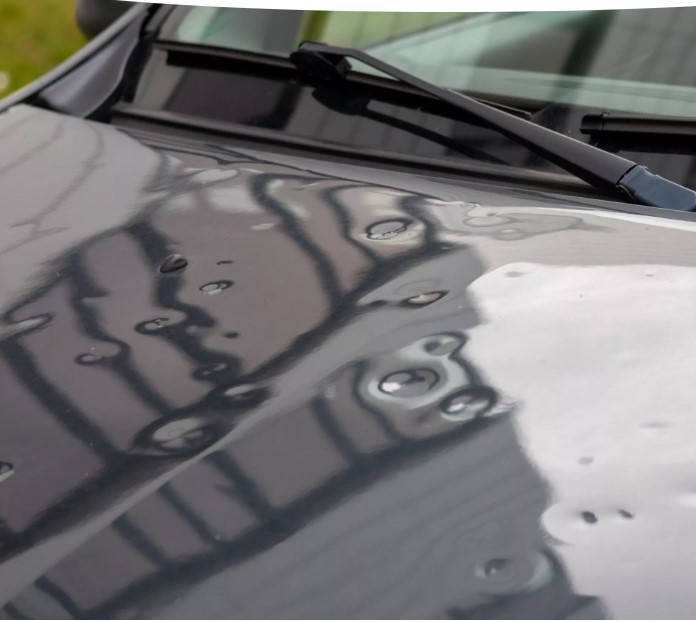From Shattered Windshields to Dented Roofs: Hail Damage Repair
Hail damage is a common occurrence in many parts of the world, especially during the summer months. Hailstones can range in size from small pebbles to large golf balls, and they can cause significant damage to homes, cars, and other structures. When hail hits a surface, it can dent or scratch it, leaving behind unsightly marks that are difficult to remove.
The effects of hail damage can be severe and long-lasting. It can also weaken the structure of your car or other vehicle if left unaddressed for too long. The longer you wait to repair hail damage, the more expensive it becomes as it continues to worsen over time.
To prevent further harm caused by hailstones on your vehicle, it is essential to seek professional assistance.
How to inspect hail damage for cars
Hailstorms can be a nightmare for car owners, and hail damage repair can be costly. It is important to inspect your car after a hailstorm to assess the damage and ensure that it gets fixed promptly. Here are some tips on how to inspect for hail damage on cars:
1. Check the roof: Hailstones can cause significant dents or cracks on the roof of your car. Inspect it carefully by running your hand over the surface and feeling for any bumps or depressions.
2. Look at the windows: The windshield, side mirrors, and other windows are vulnerable during a hailstorm. Look for chips, cracks, or scratches that need attention.
3. Check the body panels: Hailstones can leave marks on doors, fenders, hoods, trunks, etc., so scrutinize each panel carefully.
Types of repair available
Hail is a natural phenomenon that can wreak havoc on your car's exterior. Hailstones can cause dents, scratches, and even crack windshields. If your car has fallen victim to hail damage, you may be wondering what types of repairs are available to restore its appearance.
One type of repair for hail damage is paintless dent removal (PDR). This process involves using specialized tools to massage the damaged area from the inside out, without affecting the original paint finish. PDR is a cost-effective option for minor dents caused by hailstones.
Another repair option for hail damage is traditional bodywork and painting. This involves sanding down the damaged area, filling in any gaps or cracks with body filler, and repainting the affected panel(s).
Pros of hiring a professional to fix hail damage
While it may be tempting to take matters into your own hands and attempt to fix the damage yourself, there are many benefits to having hail damage repaired by a professional.
Firstly, professionals have the experience and expertise needed to accurately assess the extent of the hail damage and determine which repair methods will yield the best results. They also have access to specialized tools and equipment that allow them to perform repairs more efficiently than you would be able to on your own.
In addition, opting for professional repair services means that you'll benefit from high-quality materials that will help ensure that your car looks as good as new once all repairs are complete. Finally, choosing a reputable car repair shop helps guarantee that any warranties or guarantees on their work will hold up in case of any issues down the line.
How to file an insurance claim for hail damage repair?
After a hailstorm, you may find yourself wondering how to file an insurance claim for hail damage repair. The good news is that filing an insurance claim for hail damage isn't as difficult as it may seem.
First, document the damage by taking photographs or videos of any dents, broken windows or other visible signs of hail damage on your property or vehicle. This will help your insurance adjuster assess the extent of the damage and determine the cost of repairs. Next, contact your insurance company to report the damages and initiate the claims process. Be sure to provide them with all necessary information including policy number, date and time of loss, and a detailed description of the damages incurred.
Once your claim is filed, an adjuster will be assigned to inspect your property or vehicle to determine if it meets your policy's coverage requirements.
Tips on preventing hail damage repair in future
Hail damage can be frustrating and costly. However, there are steps you can take to prevent hail damage from occurring in the future.
Firstly, it's important to keep an eye on weather forecasts during hail season. If a storm is in the forecast, park your car in a covered area such as a garage or under a carport. If you don't have access to these options, try parking your car away from trees and other tall objects that could potentially fall onto it during the storm.
Secondly, consider investing in an impact-resistant roof for your home. These roofs are designed to withstand severe weather conditions such as hailstorms and can reduce or even prevent damage altogether.
Lastly, regularly inspect your property for potential hazards that may cause damage during a storm. This includes loose tree limbs or branches that could fall onto your home or vehicles.
Closing thoughts
It is essential to assess the extent of the damage before embarking on repairs. This will help you determine if paintless dent repair (PDR) or traditional auto body repair is needed. While PDR may be sufficient for minor dents, more severe damages may require traditional methods like sanding, painting, and filling.
In conclusion, hail damage repair is crucial in restoring your car’s appearance after an unfortunate incident. Whether it's a small dent or significant damage to the body of your vehicle, there are solutions available to make everything right again.

